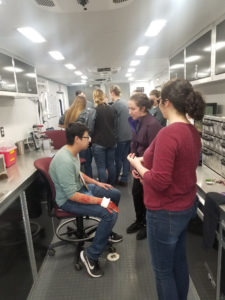
On Friday, Feb. 14, I had an amazing opportunity to use my knowledge from veterinary school to participate in a disaster simulation hosted by the Texas A&M Health Sciences Center.
Disaster Day is an all-day event that brings together students from the Texas A&M Colleges of Medicine, Pharmacy, Nursing, and Veterinary Medicine & Biomedical Sciences, as well as the School of Public Health, to work together to solve problems in a disaster scenario that affects humans and animals. It is the nation’s largest student-led interprofessional emergency response simulation.
The simulation took place at Disaster City, which is a mock community that features full-scale, collapsible structures designed to simulate various levels of disaster and wreckage. This area gave us plenty of space to work through animal cases affected by the “disaster” as well as collaborate with the other health professionals.
The “disaster” this year was a 6.1 magnitude earthquake in Dallas. For our participation, we were split into groups to triage cases (usually stuffed animals as models for our patients) together, with the help of fourth-year veterinary students and veterinarians from the Veterinary Emergency Team (VET).
In many disasters, an increase in zoonotic disease incidence can occur. These are diseases that can pass from animal to human and include infections such as Leptospirosis, Sarcoptes, or ringworm.
As veterinarians, we have the knowledge on zoonotic diseases that some human medical professions may not have, so we can help solve these disease outbreaks. For example, there was one actor who came to us veterinary students to see if her skin lesions were consistent with ringworm because the human doctors were trying to figure out if she got the disease from an animal.
We weren’t able to “treat” her, but we advised the human medical doctors that she could have gotten ringworm from her outdoor cat in the disaster. Cats show no symptoms of ringworm, usually, but the pathogen can be transmitted from cat to human.
This simulation was a great experience to practice one health collaboration to help solve important problems that affect human, animals, and the environment.
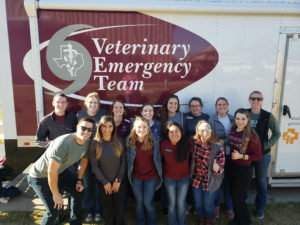

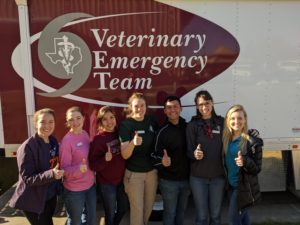 Each year, Texas A&M University hosts the nation’s largest student-led interprofessional emergency response simulation,
Each year, Texas A&M University hosts the nation’s largest student-led interprofessional emergency response simulation, 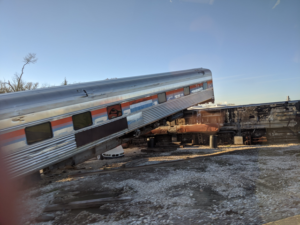 known as Disaster Day.
known as Disaster Day.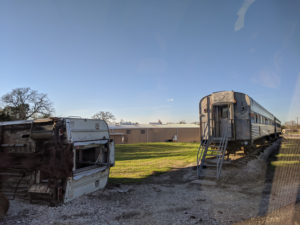
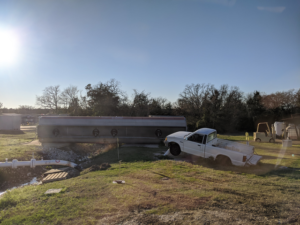 This year’s simulation was an earthquake that resulted in
This year’s simulation was an earthquake that resulted in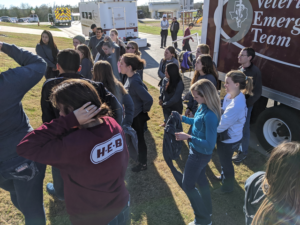
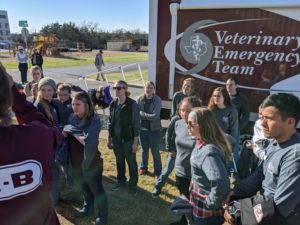 During Disaster Day, we had to triage animal cases according
During Disaster Day, we had to triage animal cases according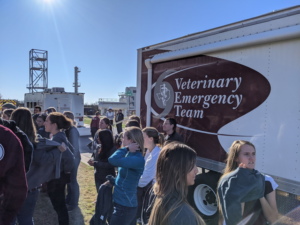

 Recently, in Orthopedic Surgery, we practiced fixing fractures on synthetic plastic bones. Although they weren’t exactly like the real thing, it was good practice trying to align the bone and drive a pin through it to stabilize it.
Recently, in Orthopedic Surgery, we practiced fixing fractures on synthetic plastic bones. Although they weren’t exactly like the real thing, it was good practice trying to align the bone and drive a pin through it to stabilize it. Though the event is a simulation that utilizes actors, it was surprising how much I immersed myself in the moment and learned from working through the various cases that were presented. The actors were so convincing and would show up anywhere from calm and collected to crying to screaming in panic!
Though the event is a simulation that utilizes actors, it was surprising how much I immersed myself in the moment and learned from working through the various cases that were presented. The actors were so convincing and would show up anywhere from calm and collected to crying to screaming in panic!